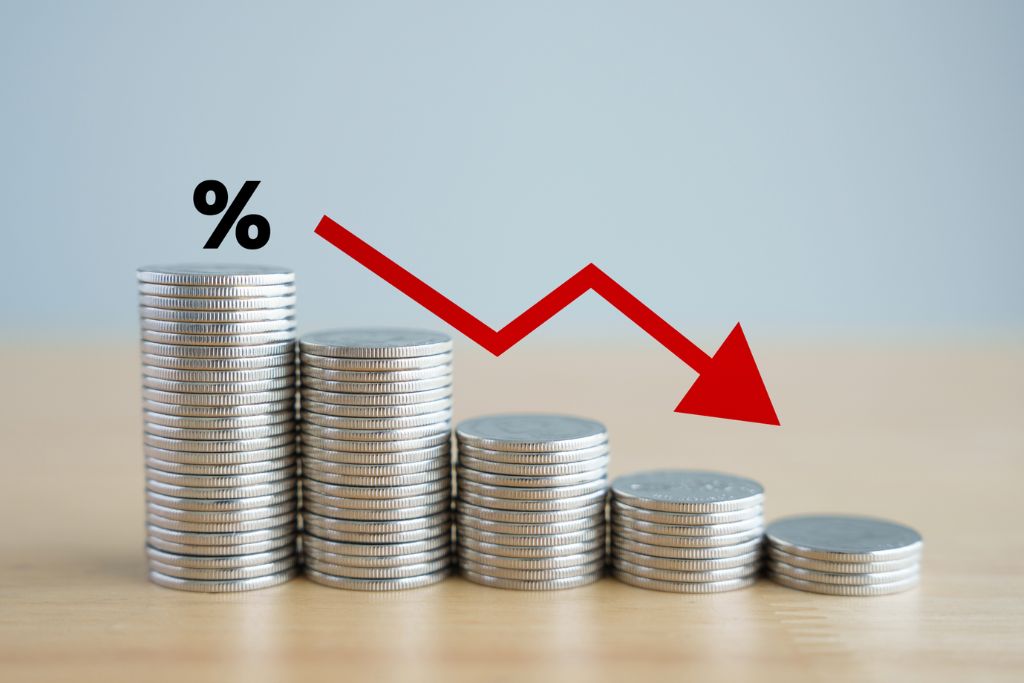The Cost of a Bad Website - How Poor Design Impacts Your Bottom Line

For any business, a website is far more than just a digital billboard. It’s a primary connection with customers, a 24/7 information source, and often the deciding factor in whether visitors become loyal clients or bounce elsewhere. A poorly designed website doesn’t just leave a bad impression; it leaves money on the table, drains potential, and risks a company’s reputation.
Even more significant, it chips away at the trust and credibility that businesses work so hard to build. In practical terms, every aspect of website design impacts your bottom line. This article explores how a bad website translates into real financial costs, from the immediate loss of potential customers to long-term hits to your brand’s credibility.
Understanding these costs allows business owners to make informed choices about investing in a strong website that drives big results rather than deterring growth.
What Defines a “Bad” Website?
“Bad” can be a strong word, but when it comes to website design, certain factors can almost guarantee poor performance. A “bad” website doesn’t just look outdated; it fails to meet the basic standards for usability, accessibility, and design quality that users expect. Imagine visiting a website where information is buried in a confusing layout, navigation is a headache, and the loading time feels interminable.
This type of user experience not only frustrates visitors but also increases the chances of them abandoning the page without interacting with it. Research has shown that 53% of mobile users will leave a website if it takes more than three seconds to load. This means that even the smallest delay can lead to substantial traffic and revenue losses.
In addition to loading speed, poor navigation and cluttered layouts create a disconnected experience. According to Adobe, nearly 39% of users will stop engaging with a website if they find the layout unattractive or difficult to follow. These issues aren’t just surface problems; they impact how effectively a website supports business goals.

💡 Related - Why Even Small Businesses Should Build Their Own Website
The True Cost of a Poorly Designed Website
The financial implications of a bad website are often deeper than they seem at first glance. When a website fails to capture or convert visitors, it becomes a liability, affecting revenue, acquisition costs, and brand perception. Each missed opportunity on your site not only impacts immediate sales but can also erode customer loyalty and trust over time.
Below are the ways in which poor design can add up to a costly burden -
1. Losing Out on Revenue
Every visitor who leaves due to frustration or confusion is a missed opportunity for revenue. Accenture found that businesses in the United States lose over $1.6 trillion annually due to poorly executed customer experiences. This loss represents not only immediate missed sales but also long-term revenue potential, as many users who leave may never return. In fact, 88% of consumers are unlikely to return after a single poor experience on a website.
For e-commerce sites, the financial impact is particularly pronounced. Imagine a situation where a website’s cumbersome checkout process causes customers to abandon their carts. Those lost sales add up quickly, especially when compounded over time. It’s a missed chance to build customer loyalty, as well. When customers consistently encounter issues, they’re likely to move on to competitors who offer a smoother experience.

2. Reputation and Brand Perception
A website often represents a brand’s voice, values, and professionalism, shaping visitors’ first impressions. A website that’s confusing, slow, or riddled with technical errors doesn’t instil confidence. For small businesses and startups, this is particularly problematic, as they rely on establishing credibility and trust from the outset. 38% of users will disengage entirely if they find a website’s design unattractive.
That’s nearly four out of ten potential clients who leave without a second thought simply because they didn’t find the website visually appealing. Furthermore, users associate website quality with the quality of products and services. When a business’s digital presence feels unpolished, visitors are less inclined to believe that the brand is trustworthy or capable.
This can lead to a decline in brand perception, making it harder to re-engage potential clients in the future.
3. High Bounce Rates and Their Impact on Search Rankings
When users land on a website and quickly leave, it creates a high bounce rate, which is an indicator that the site failed to engage them. Bounce rate is closely monitored by Google’s search algorithms; a high bounce rate signals that visitors aren’t finding the content or experience they expected, which can result in lower search rankings. Lower rankings mean reduced visibility, ultimately limiting the number of organic visitors to the site.
For many websites with poor design, bounce rates can exceed 70%, significantly diminishing their visibility and reducing conversion opportunities. The resulting loss of search rankings creates a cycle that’s hard to reverse: lower visibility leads to fewer visitors, fewer conversions, and, ultimately, lower revenue.
💁♀️ Also read - 7 Tips for Removing Unwanted Search Results from Google
4. Customer Acquisition Costs That Keep Rising
When a website can’t convert visitors into leads or clients, businesses end up spending more on customer engagement and acquisition. Paid ads, SEO, and smart campaigns may bring visitors to the website, but if they fail to convert them, those efforts (and costs) go to waste. A well-designed website naturally leads visitors through the conversion funnel, making marketing dollars stretch further.
Conversely, bad NGO websites raise the cost per acquisition as companies struggle to replace lost visitors. Forrester Research suggests that improving user experience can boost conversion rates by up to 400%. This highlights the financial advantage of investing in a design that works.
Companies that fail to prioritize good design can find themselves constantly pumping more money into marketing efforts without seeing a return on that investment.
5. The Need for Constant Maintenance and Potential Redesigns
Bad websites often need frequent fixes and maintenance to keep them functioning. From usability problems to frequent updates required to fix bugs, poorly built websites consume more resources over time. This ongoing need for maintenance diverts funds from other, potentially more profitable, areas of the business.
Clutch, a research platform, indicates that 29% of small businesses choose to redesign their websites to address usability issues. Redesigns can cost tens of thousands of dollars and often require months of work. Instead of paying for frequent repairs and eventual overhauls, businesses can save significantly by building a well-designed website from the start.
Strategies for Building an Effective Website
Investing in good website design is far more than a superficial upgrade. It’s a way to secure and enhance the website’s role in supporting business goals. An effective website goes beyond aesthetics; it creates a seamless, user-centred experience that keeps visitors engaged and converts them into loyal customers.
Here are some foundational strategies for designing a website that drives results -
1. User-Centered Design
At its core, user-centred design is about creating an experience tailored to the needs and preferences of visitors. Businesses need to understand their target audience’s behaviour, preferences, and pain points. From streamlined navigation to intuitive layouts, every aspect of the website should make it easy for visitors to find what they need and feel comfortable interacting with the content.
Building around the user experience doesn’t just increase satisfaction; it can directly influence conversions, as visitors feel guided, informed, and valued throughout their journey on the site.
2. Mobile Optimized Website
With mobile users now making up over half of all web traffic, having a mobile-friendly site is no longer optional. Mobile optimization involves designing a website that adapts to different screen sizes, ensuring that visitors can interact with it as easily on a smartphone as on a desktop. Google’s algorithms prioritize mobile-friendly websites, so optimizing for mobile can help improve search engine rankings and visibility as well.
Google prioritizes mobile-friendly sites in its rankings, meaning that mobile optimization can directly improve your site’s visibility. The statistics are hard to ignore, but by 2021, mobile e-commerce was already estimated to make up nearly 73% of all e-commerce sales globally. Businesses that embrace mobile optimization aren’t just keeping up with a trend; they’re meeting their customers where they already are.
3. Quick Loading Times
Speed matters. Research shows that a one-second delay can reduce conversions by up to 7%. This may sound minor, but for a business with a high volume of visitors, the revenue impact can be significant. Websites can optimize image sizes, enable caching, and choose fast, reliable hosting solutions. Compressing images, enabling browser caching, and selecting a reliable hosting service can all make a big difference.
It also helps to reduce the number of redirects and take advantage of content delivery networks (CDNs), which distribute your content globally for faster access. For many users, loading speed defines their impression of your business. In a world where we’re used to fast access, every second truly counts.

4. Simplified Navigation
Think about how a customer might feel walking into a store where the aisles are jumbled, and products are hard to find. Online, a cluttered or confusing navigation structure can have the same effect, leading visitors to give up and leave the site. A well-organized menu and clear, intuitive layout help visitors find what they need quickly, creating a pleasant browsing experience that encourages them to stay longer.
Some websites use a “three-click rule,” meaning users can reach any page within three clicks from the homepage. This rule isn’t just a nice-to-have; it’s a way of ensuring that visitors don’t get lost or frustrated as they explore the site. When navigation is intuitive, visitors are more likely to browse multiple pages, increasing the chances of conversion.
The simpler and clearer the navigation, the better it reflects on your brand’s professionalism and customer care.
Recommended read - How to Optimize Website for Conversions with Effective SEO Strategies
5. Regular Audits and Updates
Just as a storefront needs regular upkeep to stay appealing, so too does a website need ongoing attention. Conducting regular audits is essential to keeping your site relevant, functional, and aligned with industry standards. An audit can reveal issues that might otherwise go unnoticed, such as broken links, slow-loading pages, outdated content, or inconsistencies in the layout that could harm user engagement.
It’s a way of catching potential problems early so they don’t impact the customer experience. An audit should cover all major areas of your website, from usability and technical performance to content accuracy and SEO. This approach ensures that your site is strong across the board. Keeping your content updated is just as important; outdated information or obsolete designs can make a site seem neglected and unprofessional.
Regular updates show visitors that your business is active, reliable, and committed to staying current.
Final Thoughts - The Value of a Strong Website
A well-designed website does much more than make a good first impression; it actively supports growth, builds trust, and makes a difference in your bottom line. Investing in quality design isn’t a one-time expense but a continuous commitment to creating a user-friendly experience that reflects your brand’s values and credibility.
It’s about meeting customers where they are, respecting their time, and making it easy for them to connect with you. By focusing on the fundamentals of good design and maintenance, you transform your website from a potential liability into a powerful business tool that supports both immediate goals and long-term growth.
In a competitive market, a thoughtfully designed website is not just an advantage; it’s essential.
Stop Losing Revenue to a Bad Website - Partner with FlexibleSites
A poorly designed website can cost your business more than you think. FlexibleSites creates user-centred, conversion-optimized websites that drive results and support long-term growth.
With our easy-to-use CMS and efficient design process, you’ll have a website that looks great and boosts engagement and revenue.
Try a FREE demo today to see how you can turn your website into a powerful asset for your business.